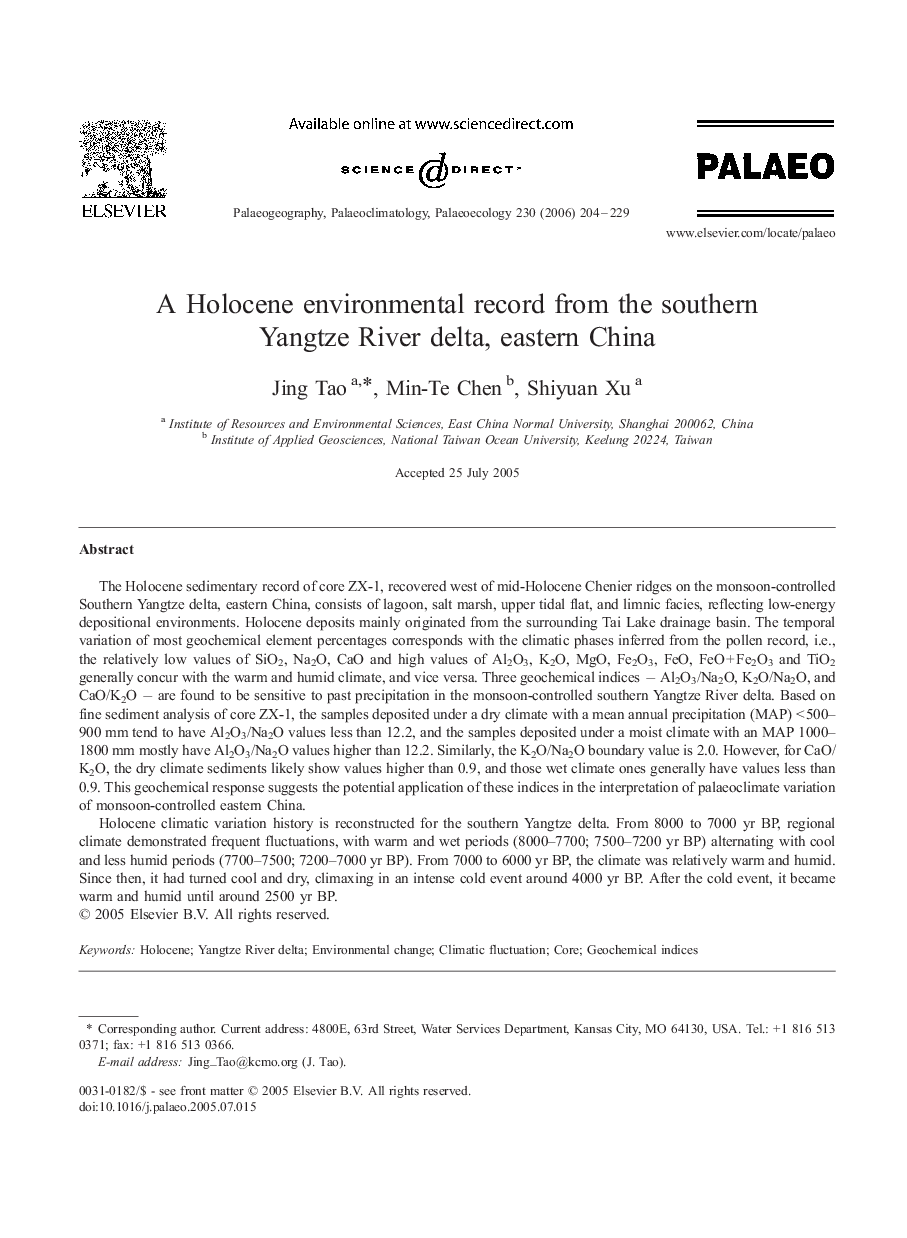| کد مقاله | کد نشریه | سال انتشار | مقاله انگلیسی | نسخه تمام متن |
|---|---|---|---|---|
| 4469541 | 1622380 | 2006 | 26 صفحه PDF | دانلود رایگان |

The Holocene sedimentary record of core ZX-1, recovered west of mid-Holocene Chenier ridges on the monsoon-controlled Southern Yangtze delta, eastern China, consists of lagoon, salt marsh, upper tidal flat, and limnic facies, reflecting low-energy depositional environments. Holocene deposits mainly originated from the surrounding Tai Lake drainage basin. The temporal variation of most geochemical element percentages corresponds with the climatic phases inferred from the pollen record, i.e., the relatively low values of SiO2, Na2O, CaO and high values of Al2O3, K2O, MgO, Fe2O3, FeO, FeO + Fe2O3 and TiO2 generally concur with the warm and humid climate, and vice versa. Three geochemical indices − Al2O3/Na2O, K2O/Na2O, and CaO/K2O − are found to be sensitive to past precipitation in the monsoon-controlled southern Yangtze River delta. Based on fine sediment analysis of core ZX-1, the samples deposited under a dry climate with a mean annual precipitation (MAP) < 500–900 mm tend to have Al2O3/Na2O values less than 12.2, and the samples deposited under a moist climate with an MAP 1000–1800 mm mostly have Al2O3/Na2O values higher than 12.2. Similarly, the K2O/Na2O boundary value is 2.0. However, for CaO/K2O, the dry climate sediments likely show values higher than 0.9, and those wet climate ones generally have values less than 0.9. This geochemical response suggests the potential application of these indices in the interpretation of palaeoclimate variation of monsoon-controlled eastern China.Holocene climatic variation history is reconstructed for the southern Yangtze delta. From 8000 to 7000 yr BP, regional climate demonstrated frequent fluctuations, with warm and wet periods (8000–7700; 7500–7200 yr BP) alternating with cool and less humid periods (7700–7500; 7200–7000 yr BP). From 7000 to 6000 yr BP, the climate was relatively warm and humid. Since then, it had turned cool and dry, climaxing in an intense cold event around 4000 yr BP. After the cold event, it became warm and humid until around 2500 yr BP.
Journal: Palaeogeography, Palaeoclimatology, Palaeoecology - Volume 230, Issues 3–4, 30 January 2006, Pages 204–229